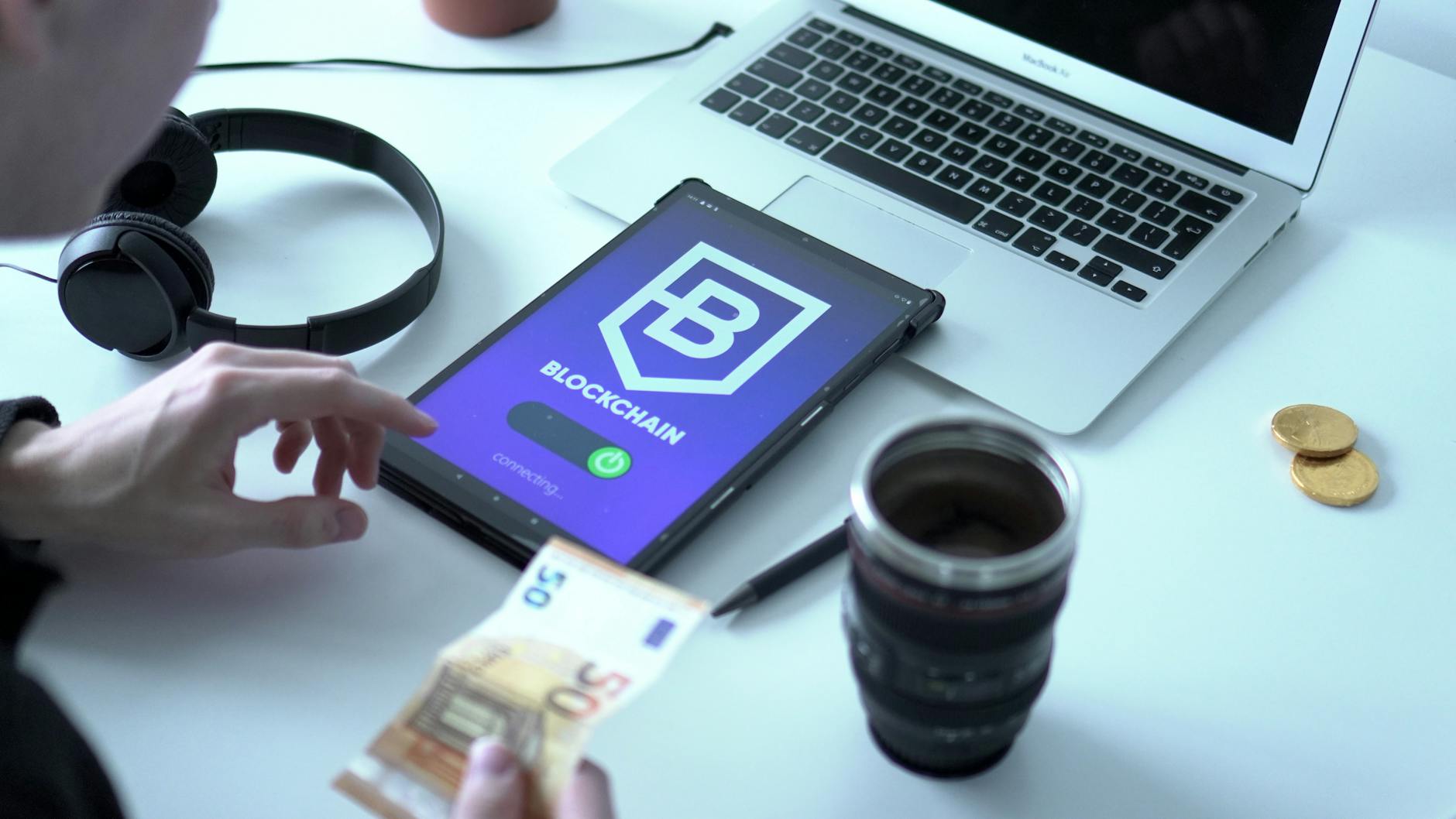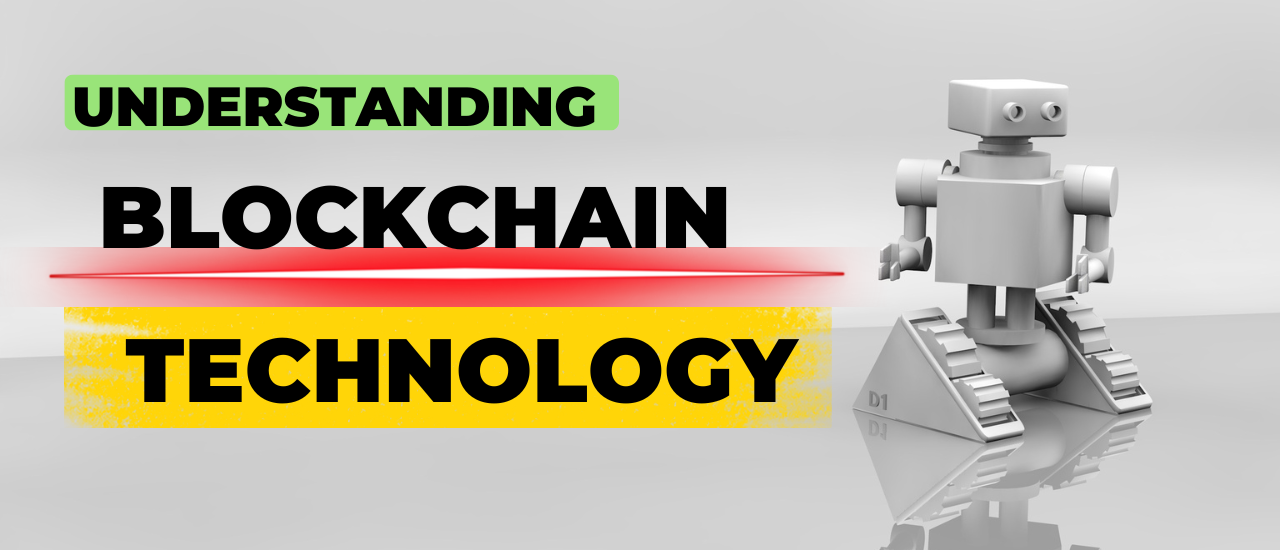Blockchain might sound like a buzzword, but it’s reshaping how we think about trust and transactions. At its core, it’s a secure way to record and share data without relying on a middleman. Why does this matter? From cryptocurrencies like Bitcoin to transforming industries like finance and supply chains, blockchain is already driving real-world change. Understanding it isn’t just for tech experts—it’s becoming a must-know for anyone curious about the future of technology and money. Let’s simplify the concept and break it down together. Understanding blockchain technology helps in exploring its role in secure digital transactions.
What is Blockchain?
In today’s tech-driven world, blockchain is a term you hear a lot, but many people still find it confusing. Think of blockchain as a modern-day ledger—just like an accountant’s book but entirely digital, shared, and incredibly secure. It’s changing how data is managed and how trust is built, especially for things like money, contracts, and even identity. Many industries are benefiting from understanding blockchain technology and its decentralized nature.
The Fundamental Definition
Put simply, blockchain is a distributed and decentralized ledger that records information in a secure and unalterable way. Imagine a spreadsheet that’s duplicated across thousands of computers in a network, and this spreadsheet constantly updates for everyone when a new entry is made. That’s blockchain for you. Understanding blockchain technology is essential for those interested in cryptocurrency and smart contracts.
Unlike traditional systems where one central authority oversees everything, blockchain operates on a peer-to-peer network. Each block in the chain carries unique data, such as transaction details, and once it’s added, it can’t be changed. This makes blockchain resilient against tampering or hacks because altering one copy means changing thousands of others to match—a nearly impossible feat. Businesses are adopting innovative solutions by understanding blockchain technology and its potential.
Key Characteristics of Blockchain
What makes blockchain stand out? It’s not just the technology but its core features that make it a revolutionary system. Let’s explore these key characteristics:
- Decentralization: No central system controls the blockchain. Instead, it works on a distributed network of users, giving power to all participants.
- Transparency: Every participant in the network can access its data. While personal details might be encrypted, the transactions themselves are open for everyone to see. Think of it as public accountability built into the system.
- Immutability: Once data is recorded on the blockchain, it cannot be altered or deleted. This gives it unmatched reliability for applications requiring security, like financial systems and medical records.
- Security: Advanced cryptographic algorithms ensure data is protected and only accessible to authorized users. It’s like having the strongest lock on your digital vault.
- Fault Tolerance: Since the data exists on multiple nodes across the network, even if one fails, the system continues to operate.
For a deeper dive into key blockchain features, check out this comprehensive breakdown from GeeksforGeeks.
History of Blockchain
Blockchain didn’t appear overnight—it’s been evolving for decades. Let’s take a journey through its history.
- 1991: Researchers Stuart Haber and W. Scott Stornetta laid the groundwork by creating a system that used cryptography to secure digital documents, preventing tampering.
- 2008-2009: This is where blockchain gained fame. Under the pseudonym Satoshi Nakamoto, an individual or group introduced Bitcoin, the world’s first cryptocurrency, using blockchain as its foundation. It showcased how blockchain can operate as a decentralized financial system.
- 2014: Blockchain began expanding beyond cryptocurrencies. Developers like Vitalik Buterin worked on platforms such as Ethereum, enabling advanced uses like smart contracts and decentralized apps.
- The Present: Blockchain is now used across diverse industries—healthcare, supply chain management, and voting systems, to name a few. Its potential continues to grow as technology evolves.
If you’re interested in more details, refer to this historical timeline outlined on TechTarget.
Understanding blockchain isn’t just about knowing its definition; it’s about grasping why it’s shaking up traditional systems. These concepts are just the tip of the iceberg, paving the way for a whole new approach to trust and transparency. Understanding blockchain technology allows individuals to grasp how data security is enhanced.

Photo by Google DeepMind
Ready to dive deeper into the world of crypto? Check out our Beginner’s Guide to Cryptocurrency Investing and learn how to make smart investment decisions in 2025!
How Blockchain Works
Understanding how blockchain operates is key to recognizing its transformative impact on industries worldwide. At its foundation, blockchain is a system where data is stored in blocks, verified through a consensus process, and even automated using innovative tools like smart contracts. Let’s break down these concepts step by step. With the rise of digital assets, understanding blockchain technology has become more important than ever.
Blocks and Chains

Photo by Morthy Jameson
Picture a chain, but instead of links, it’s composed of digital blocks. Each block stores unique pieces of information, such as transaction data, a timestamp, and its own identifier called a hash. What makes these blocks groundbreaking is how they’re linked together. Understanding blockchain technology simplifies the concepts of decentralization and peer-to-peer networks.
- Hashes Tie It All Together: Think of a hash as a fingerprint. It’s a unique string of characters generated by cryptographic algorithms that identifies a block. Each block doesn’t just carry its own hash—it also includes the hash of the previous block. This dual data system creates a secure, interconnected chain.
- Data Integrity: If someone tries to alter a block’s data, its hash changes immediately. That action would break the connection to the next block, signaling tampering and requiring consensus from the whole network to validate or reject the alteration.
This structure ensures the blockchain is both tamper-evident and tamper-resistant. For a detailed dive into how these blocks are connected, check out this guide from GeeksforGeeks.
Consensus Mechanisms
A blockchain is essentially a decentralized system, meaning there’s no single authority managing the network. So, how does everyone agree on what gets added to the chain? This is where consensus mechanisms come into play.
There are two common types:
- Proof of Work (PoW): This classic method requires participants, known as miners, to solve complex mathematical problems to validate new information. By solving these problems, miners ensure data accuracy and prevent malicious entries. However, PoW is energy-intensive because it demands substantial computational power.
- Proof of Stake (PoS): Instead of crunching numbers, PoS asks participants to “stake” their cryptocurrency. The more a participant stakes, the higher the chance they get to validate new blocks. This approach is less energy-consuming than PoW and is gradually becoming the preferred model for many modern blockchains.
Each mechanism has its strengths and challenges, but both prioritize network security and authenticity. If you’re curious, Visa explains how consensus ensures blockchain integrity.
Smart Contracts
Imagine contracts that execute themselves—no lawyers, paperwork, or delays required. That’s exactly what smart contracts do on the blockchain. These are self-executing agreements with terms directly embedded into code.
Here’s how they work:
- Triggered by Events: Smart contracts are programmed to act automatically when predetermined conditions are met. For instance, if a payment is received, a smart contract can instantly transfer ownership of an asset.
- Transparent and Secure: Because they live on the blockchain, smart contracts are tamper-proof. Everyone involved can see the predetermined rules, ensuring trust without needing intermediaries.
For example, real estate transactions, loans, and even supply chains can benefit from smart contracts. They save time, reduce costs, and eliminate human errors. Learn more about their potential from IBM’s guide.
These components—blocks, chains, consensus mechanisms, and smart contracts—work together to make blockchain the innovative technology it is today. Understanding them not only demystifies how blockchain works but also highlights why it’s capturing so much attention. Financial institutions are revolutionizing their operations by understanding blockchain technology.
Applications of Blockchain
Blockchain technology is no longer confined to cryptocurrencies; its versatile architecture is finding use across various industries. Let’s explore some of the most impactful applications of blockchain in today’s world, demonstrating how it is reshaping both digital and physical systems. Understanding blockchain technology helps in recognizing its impact on supply chain management.
Cryptocurrencies and Beyond
Blockchain made its debut with Bitcoin, a groundbreaking cryptocurrency built to operate without central banks. Today, it’s the backbone of numerous digital currencies like Ethereum and Ripple, ensuring secure, transparent transactions. But its scope goes beyond financial assets. Many startups are leveraging new opportunities by understanding blockchain technology.
In non-financial sectors, blockchain is enabling innovative solutions like supply chain traceability, digital identity management, and even intellectual property rights protection. The ability to create trust in decentralized systems is what makes it so versatile. Understanding blockchain technology is key to navigating the future of Web3 and digital ownership.
For examples of how blockchain stretches beyond finance, check out 17 Real-World Blockchain Applications.
Supply Chain Management
Ever wonder how your food gets from farm to fork? Blockchain brings unprecedented traceability to the supply chain. By using a decentralized ledger, businesses can track every step of a product’s journey—from raw materials to delivery. Governments are exploring regulations after understanding blockchain technology and its implications.
- Transparency: Blockchain lets consumers trace the origins of goods. Want to verify if your coffee is ethically sourced? Blockchain can provide the proof.
- Efficiency: By digitizing records, blockchain eliminates middlemen, accelerating processes and cutting costs.
- Risk Reduction: Counterfeit goods are a major issue. Blockchain helps verify authenticity, especially for high-value items like diamonds or luxury goods.
Some top brands are already using blockchain to reduce risk and ensure transparency. Learn more from Deloitte’s insights.
Healthcare and Record Management
Managing sensitive medical data can be a logistical nightmare with traditional systems. Blockchain provides a secure, transparent way to handle patient records:
- Patient Ownership: Patients can control who sees their data without losing privacy.
- Interoperability: Healthcare providers can share records across platforms without risking breaches.
- Fraud Prevention: Blockchain is tamper-proof, making it ideal for drug supply chains and insurance claims.
Explore real-world healthcare blockchain use cases in this systematic review.
Voting Systems and Governance
Blockchains are offering a promising solution for making elections fairer and more transparent. How?
- Immutability: Votes stored on a blockchain can’t be tampered with.
- Anonymity: Ensures voter privacy while maintaining a public ledger.
- Accessibility: Could enable secure remote voting, especially useful for people living abroad or with limited mobility.
That said, there are challenges like scalability and network attacks that still need to be addressed. For an in-depth perspective, visit Follow My Vote.
Decentralized Finance (DeFi)
Why depend on banks when you can lend, borrow, and trade assets directly? DeFi platforms are removing the middleman from financial services:
- Smart Contracts: Automatically execute transactions when conditions are met.
- Open Access: Available to anyone with an internet connection.
- Global Transactions: No need for currency conversions or banking fees.
Platforms like Aave and Uniswap are showing how blockchain can revolutionize financial services. Want to dive deeper into DeFi? Here’s a comprehensive introduction from AWS.
Blockchain’s ability to offer secure, tamper-proof, and transparent systems is driving its adoption across a wide range of use cases. Understanding blockchain technology empowers developers to create decentralized applications. With these applications, it’s clear that this technology isn’t just a passing trend—it’s a tool for real-world innovation. Ready to find out more ways blockchain is shaping industries? Keep reading in the next section!
Benefits and Challenges of Blockchain
Blockchain has become synonymous with innovation, offering numerous advantages while also presenting unique challenges. Let’s dive into what makes it so promising yet occasionally complex to implement effectively. The gaming industry is evolving rapidly due to understanding blockchain technology and NFTs.
Advantages of Blockchain
Blockchain is more than just a trend; it’s solving real-world problems with its unprecedented features. Here’s what makes it stand out:

Photo by Worldspectrum
1. Enhanced Security
Blockchain transactions are encrypted and linked to the preceding block, forming a chain that’s incredibly difficult to tamper with. This makes unauthorized modifications nearly impossible. Understanding blockchain technology helps in distinguishing between public and private blockchain networks. More importantly, decentralization eliminates a single point of failure, adding an extra layer of protection. Want a closer look? Learn from IBM’s detailed breakdown of blockchain security.
2. Transparency and Traceability
Every transaction is recorded on an immutable ledger visible to all members of the blockchain network. This isn’t just helpful for financial applications—it’s transforming supply chains, too. Businesses can track goods from origin to delivery, gaining accountability for every step. Cybersecurity experts emphasize the importance of understanding blockchain technology for data integrity. For more, see TechTarget’s insights on business benefits.
3. Decentralization
A decentralized structure removes the need for intermediaries like banks or third-party services. It fosters peer-to-peer networks, empowering individuals and reducing dependency on centralized authorities. This disruptive quality is what positions blockchain as a game-changer in various fields. Understanding blockchain technology enhances knowledge of smart contract automation.
4. Efficiency and Cost Savings
Blockchain speeds up processes significantly by eliminating middlemen and automating operations with smart contracts. For example, cross-border payments that usually take days can be completed in minutes. Additionally, fewer intermediaries mean lower transaction fees. The healthcare sector is improving data management by understanding blockchain technology. Curious about where efficiency comes into play? Find out in GeeksforGeeks’ article.
Challenges and Limitations
Even with its benefits, blockchain isn’t free of drawbacks. These challenges can affect its scalability and adoption in industries.
1. Scalability Concerns
As blockchain networks grow, so do transaction times and energy needs, particularly in systems like Bitcoin. These limitations hinder its ability to handle large-scale operations efficiently. Understanding blockchain technology is crucial for investors exploring the crypto market. Learn about strategies for overcoming scalability challenges from Deloitte’s guide.
2. High Energy Consumption
Proof of Work (PoW), one of the most common consensus mechanisms, requires significant computing power, leading to high energy costs. While newer models like Proof of Stake (PoS) aim to reduce this, the environmental impact remains a concern. More educational resources are now available for understanding blockchain technology in depth. Check out the environmental challenges in Forbes’ article on blockchain’s biggest problems.
3. Misuse and Fraudulent Activity
Although the technology itself is secure, bad actors can misuse it for illegal activities such as money laundering or the sale of illicit goods. Blockchain’s pseudo-anonymous nature makes it a double-edged sword in some cases. Understanding blockchain technology provides insights into how digital transactions remain secure and transparent.
4. Complexity and Adoption Barriers
Implementing blockchain isn’t just a matter of flipping a switch—it requires expertise, resources, and a robust understanding of how it integrates with existing systems. Industries like healthcare, which rely on straightforward data sharing, often struggle with blockchain’s steep learning curve. Many companies are transforming their operations by understanding blockchain technology and its benefits.
Blockchain is undeniably transformative, but success lies in addressing these obstacles. How can industries balance its benefits with its complexities?
The Future of Blockchain
Blockchain technology is advancing at a rapid pace, influencing industries, governments, and individuals around the globe. As we look ahead, its potential seems boundless, but key trends, challenges, and knowledge gaps must be addressed to unlock its full promise. Understanding blockchain technology helps individuals and businesses embrace decentralized finance.
Predicted Trends

Photo by RDNE Stock project
Several trends are expected to shape blockchain’s path forward, fueled by technological advancements and market demands. Here are some major directions:
- Increased Adoption: Blockchain is no longer limited to tech-savvy industries. Financial services, supply chains, healthcare, and even real estate are adopting distributed ledger technology to improve efficiency and eliminate middlemen. According to CrustLab, the business value added by blockchain could surpass $360 billion by 2026.
- Integration with AI: The fusion of blockchain with artificial intelligence is becoming a reality. These two technologies complement each other—blockchain provides secure data storage while AI offers analytics and predictive capabilities. This convergence opens doors to smarter, automated systems.
- Sustainable Solutions: Proof of Stake (PoS) and other energy-efficient consensus mechanisms are replacing energy-intensive models like Proof of Work (PoW). Sustainability is being prioritized as industries aim to reduce blockchain’s environmental impact. Blockchain providers are now focusing heavily on adapting green technologies, as highlighted in Kraken’s Blockchain Trends.
Emerging trends like broader tokenization, decentralized autonomous organizations (DAOs), and global regulation compliance will likely become prominent in driving blockchain’s growth.
Regulation and Standards
For blockchain to flourish, clear rules and frameworks need to guide its development and use. Governments and organizations worldwide are gradually formalizing these regulations, ensuring blockchain operates securely and ethically. The future of secure online interactions depends on understanding blockchain technology.
- Global Overview: Nations are beginning to embrace blockchain under structured guidelines. For instance, the European Commission is working toward creating a transparent framework for blockchain applications, as discussed on the EU Digital Strategy Policy site.
- Challenges in Regulation: Regulatory uncertainty is still a roadblock. Questions surrounding liability in smart contracts, cross-border data sharing, and user privacy are constantly being debated. Each nation has unique challenges depending on its technology adoption rate and governing principles.
- Significance of Standards: Adopting universal standards can ensure blockchain systems are interoperable and trustworthy. Learn how regulatory bodies are actively shaping blockchain’s legal landscape in the US from this state review guide.
As blockchain becomes a tool for mainstream applications, these regulations will play a crucial role in its global acceptance.
The Role of Education and Awareness
Blockchain’s potential can only be fully realized if there’s widespread understanding of how it works. Both individual knowledge and corporate awareness are key to unlocking growth.
- Public Understanding: Many individuals still associate blockchain solely with cryptocurrencies. Education initiatives, such as community-based learning programs and courses, are vital to teaching the broader applications of blockchain. This is emphasized by Medium, which notes that education helps users make informed decisions and avoid scams.
- Corporate Training: Organizations want to integrate blockchain into operations, but a lack of technical expertise often stalls progress. Upskilling teams with practical blockchain knowledge will enable companies to adopt and innovate effectively.
- Shaping Future Generations: Beyond today’s industries, schools and universities are incorporating blockchain into their curriculums. As GeeksforGeeks points out, the education sector itself could benefit from blockchain by offering immutable student records and fraud-resistant documentation.
Promoting awareness will reduce misconceptions about blockchain’s purpose, fostering trust and supporting wider adoption across various levels of society.
In shaping the future of blockchain, a balance between innovation, careful governance, and widespread education will be the pillars for its success.
Conclusion
Blockchain isn’t just a buzzword—it’s a revolutionary way to think about trust, ownership, and transparency in the digital age. Its decentralized structure, inherent security, and transformative potential make it a key player in shaping the future of countless industries.
Understanding blockchain equips you with the knowledge to navigate these changes and see how it can simplify processes, create accountability, and open up opportunities. Whether you’re curious about its use in cryptocurrencies, supply chains, or smart contracts, now is the perfect time to explore its applications further.
Want to stay ahead? Keep learning, ask questions, and follow how this technology continues to evolve. Blockchain is redefining systems as we know them—don’t miss out on being part of that change.






One thought on “Understanding Blockchain Technology : What It Is, How It Works, and Why It Matters”